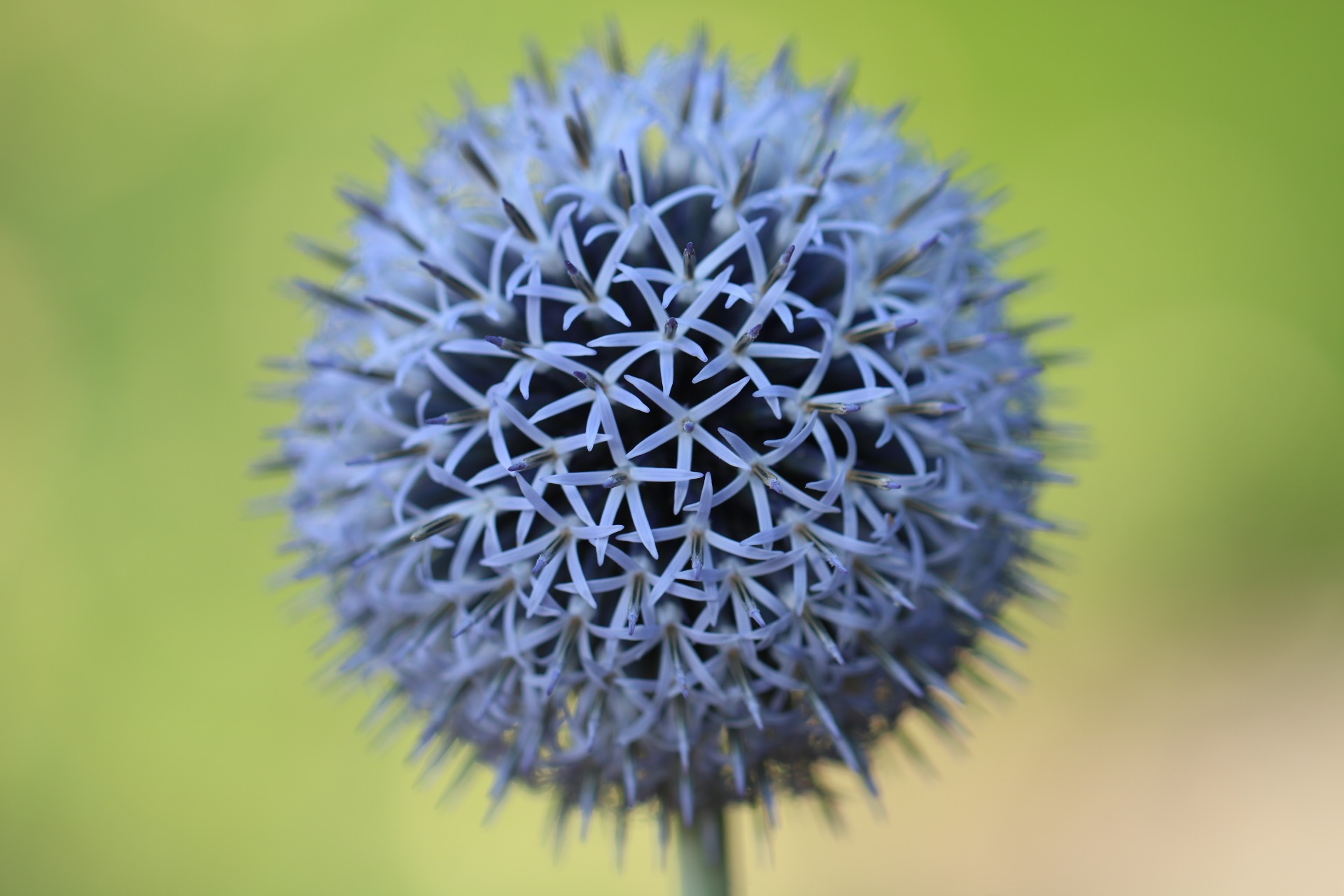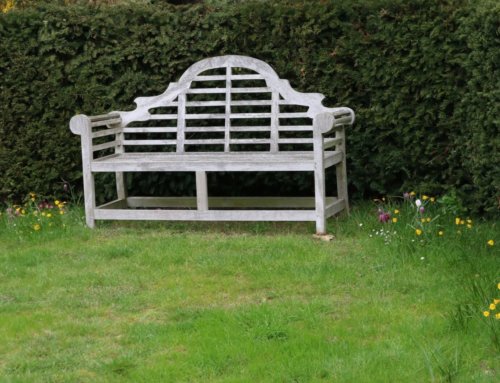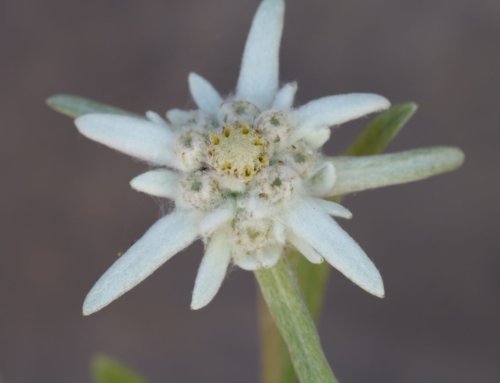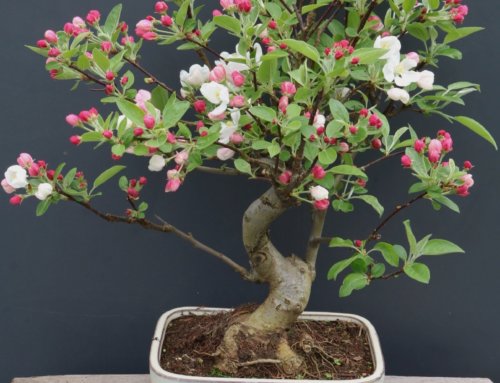If you’re looking for a shot of cool blue in a high summer garden – plant Echinops. It’s largely trouble free and bees of all sorts can’t get enough of it.
Commonly known as the Globe Thistle, Echinops has steely grey slightly spiky divided stems – but it is the perfectly spherical ball which tops each stem that gives the plant its character. Each ball is smothered with individual blue sparkler-shaped flowers which open in a wave until the whole ball is covered.
I have several groups of Echinops ‘Taplow Blue’ in my garden. They were given to me by a friend and have clumped up beautifully, meaning they can be divided this autumn and the surplus given away to other friends.
A tall plant, growing to up to 1.5 metres, Echinops ‘Taplow Blue’ can add height and drama to a mixed border and looks particularly good mixed with yellows and oranges. I have some planted alongside a tall yellow helianthus. There’s something about the sun yellow and sky blue combination that works.
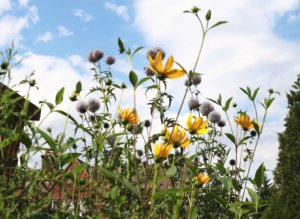
Echinops ‘Taplow blue’ with yellow Helianthus
Of course, if you haven’t got space for a lofty perennial such as ‘Taplow Blue’ there are other varieties of slightly shorter stature. Echinops ritro ‘blue hedgehog’ and Echinops ‘Veitch’s Blue’ reach a metre in height.
If you like the shape of the flower but can’t accommodate blue in your garden, consider Echninops ‘Arctic Glow’ which has icy white flowers.
Echinops will even grow in poor soils and gravel gardens and will perform best in full or partial sun.
The plant can attract blackfly but I haven’t found even heavy infestations damaging the performance of the plant.
Spikes of Echinops will last several days in a vase so make a great cut flower. The blue may fade over the course of a few days to a more silvery tone
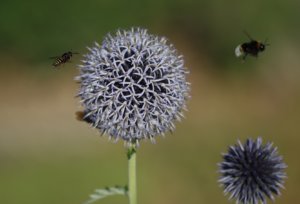
Echinops are a magnet for winged pollinators in summer.
.
